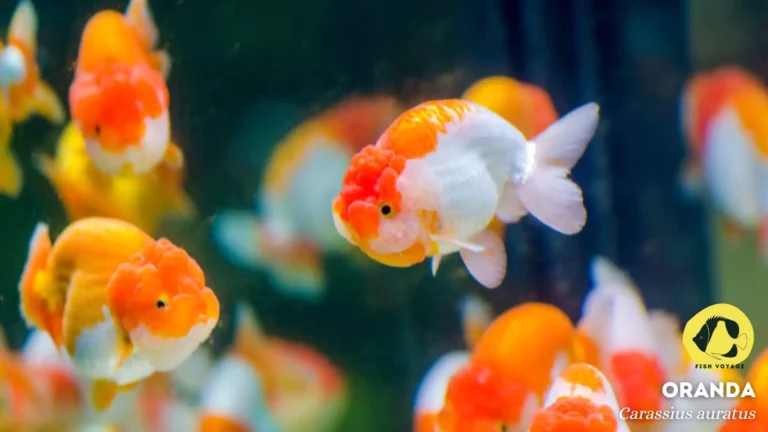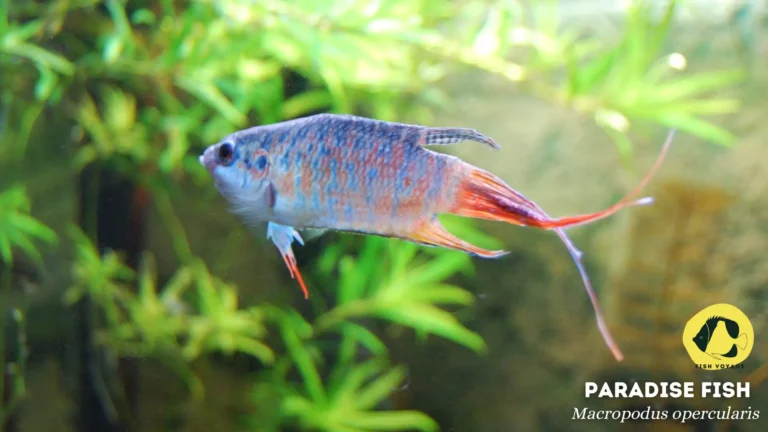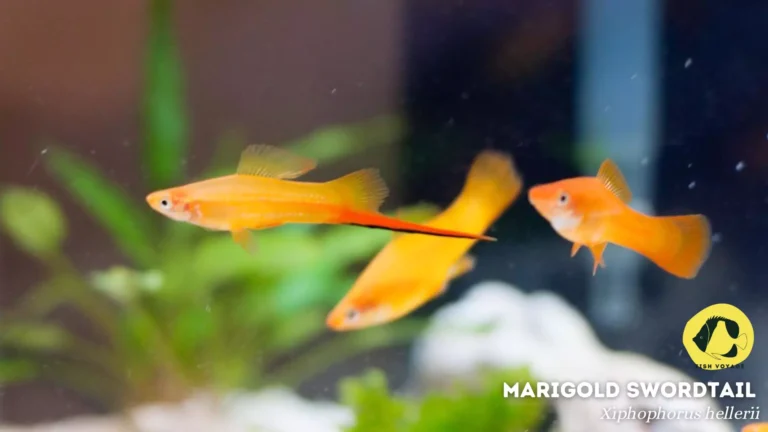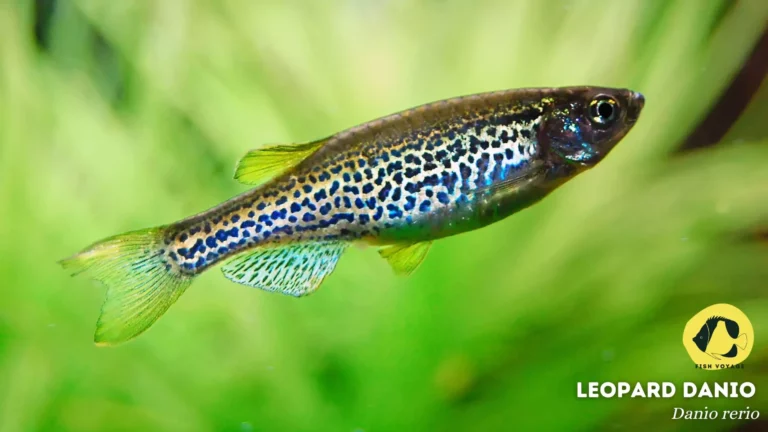The Ultimate List of Zebrafish Tank Mates
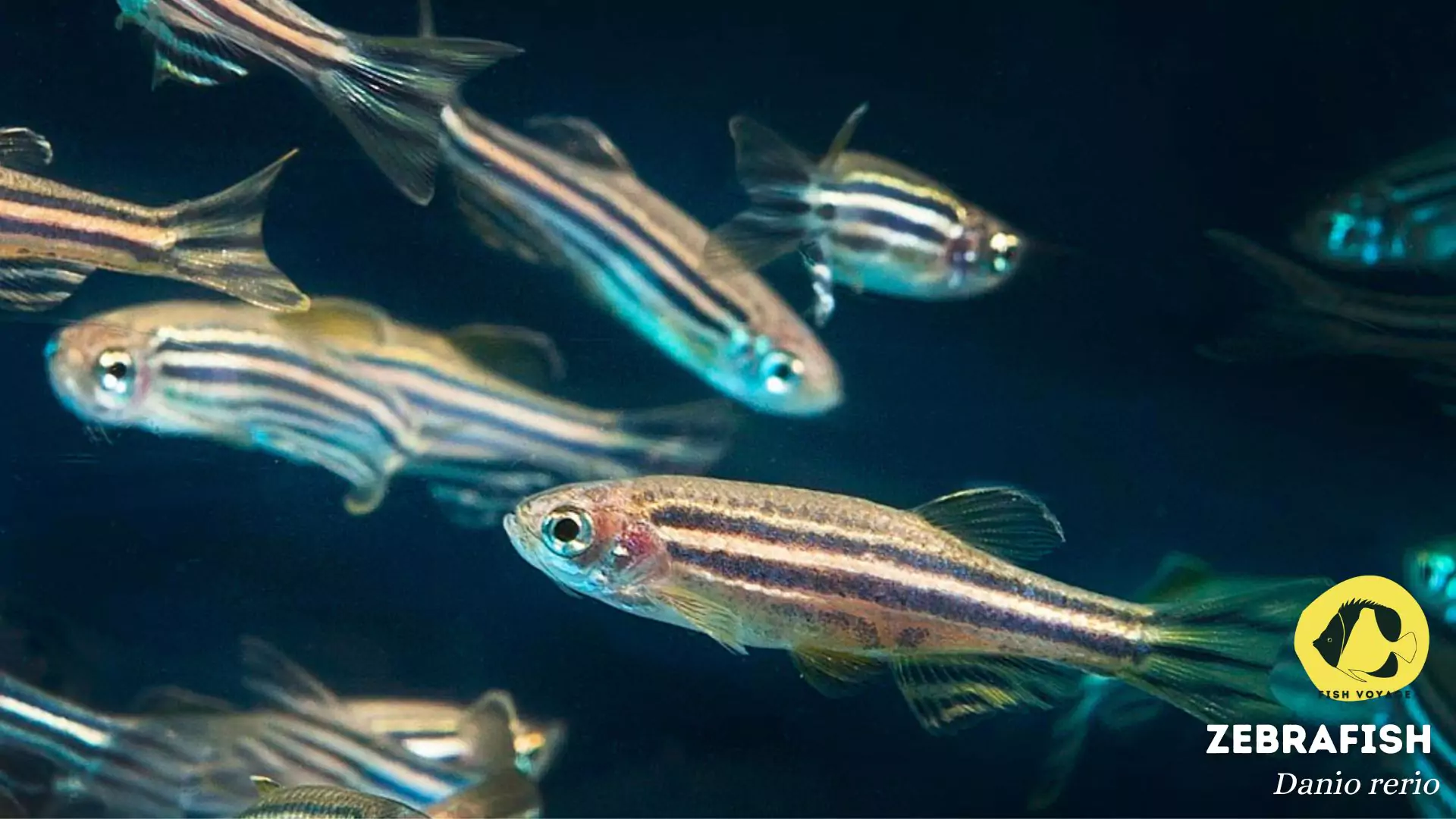
In the captivating realm of aquarium enthusiasts, the concept of selecting ideal companions for your zebrafish takes center stage. Choosing the right zebrafish tank mates is not merely a matter of aesthetics; it’s a fundamental aspect of ensuring the well-being and harmony within your aquatic environment. The compatibility of tank mates plays a pivotal role in the overall health of your zebrafish community, influencing their behavior, stress levels, and, ultimately, their longevity. In this exploration of zebrafish tank mates, we delve into the intricacies of species dynamics and environmental considerations, guiding you towards creating a thriving and balanced aquarium ecosystem. Join us on this journey where science meets aquarist artistry, and every tank mate becomes a crucial player in the symphony of underwater life.
Characteristics of Zebrafish
Behavioral Marvels
Zebrafish, renowned for their vibrant stripes and dynamic demeanor, boast a fascinating array of behaviors. These social creatures exhibit a strong inclination towards communal living, thriving in the company of their conspecifics. Known for their playful antics and energetic swims, zebrafish bring life and vivacity to any aquarium setting.
Compact Yet Colorful
Despite their modest size, typically ranging from 2 to 3 inches, zebrafish captivate enthusiasts with their dazzling hues. Their small stature makes them well-suited for community tanks, allowing aquarists to curate visually stunning and diverse aquatic landscapes.
Water Conditions as a Canvas
Zebrafish are adaptable, but optimal conditions are key to unlocking their full potential. Maintaining a stable water temperature between 75-80°F (24-27°C) and a slightly acidic to neutral pH (6.5-7.5) mirrors their native habitats, fostering both physical health and vibrant coloration.
Schooling Symphony
The heartbeat of a zebrafish tank lies in its collective spirit. Zebrafish display a natural inclination to form schools, fostering a sense of security and camaraderie. An aquarium environment that mimics this social structure not only enhances their well-being but also showcases their captivating synchronized movements.
In essence, understanding the behavioral nuances, size considerations, and preferred aquatic conditions of zebrafish lays the foundation for a successful aquarium venture. By embracing their social nature and tailoring the environment accordingly, aquarists unlock the full potential of these captivating aquatic companions.
Factors to Consider Before Choosing Tank Mates
Harmony in Water Parameters
To orchestrate a thriving aquatic symphony, meticulous attention to water conditions is paramount. Zebrafish, originating from the freshwater habitats of South Asia, flourish in an environment with a temperature range of 75-80°F (24-27°C). Maintaining a slightly acidic to neutral pH (6.5-7.5) and moderate hardness aligns with their natural preferences, ensuring their physiological well-being and vibrant coloration.
Tank Size: The Canvas for Coexistence
The canvas upon which the aquatic masterpiece unfolds, the tank size becomes an instrumental factor in harmonizing zebrafish and their tank mates. Adequate space is not merely a luxury but a necessity, especially when considering multiple fish. A spacious environment minimizes territorial disputes and provides each inhabitant with the freedom to express their natural behaviors, fostering a serene and balanced ecosystem. A minimum of 20 gallons is recommended for a community setup, providing ample space to prevent territorial disputes and ensure the overall well-being of the inhabitants
Compatibility as the Cornerstone
Selecting tank mates akin to zebrafish in temperament is a cornerstone of successful aquarium curation. While zebrafish are renowned for their sociable nature, choosing companions with similar dispositions ensures a harmonious coexistence. Avoiding species prone to aggression or those with conflicting environmental requirements is pivotal, safeguarding the equilibrium of the aquatic community.
In navigating the intricacies of zebrafish tank mate selection, an awareness of optimal water parameters, the significance of an expansive tank, and the art of compatibility emerges as the guiding trinity. By attending to these nuances, aquarists lay the foundation for an aquatic haven where each finned resident thrives in unison.
Suitable Zebrafish Tank Mates
Danios: Dazzling Dance Partners
Danios, with their vivacious energy and striking patterns, make for ideal dance partners in the zebrafish aquarium. Species like Zebra Danios and Leopard Danios share a kinship with zebrafish, forming lively schools that traverse the tank with synchronized elegance. Their compatibility extends beyond aesthetics, contributing to a dynamic and visually captivating aquatic community.

Rasboras: Peaceful Companions in Tranquility
Rasboras, known for their tranquil demeanor and vibrant colors, seamlessly integrate into a zebrafish habitat. Harlequin Rasboras and Lambchop Rasboras, for instance, coexist peacefully, adding a layer of serenity to the aquarium. Their unobtrusive nature complements the lively disposition of zebrafish, creating a harmonious underwater tableau.

Corydoras Catfish: Bottom-Dwelling Harmony
Beneath the surface lies a layer of harmony, personified by Corydoras Catfish. Their bottom-dwelling behavior not only adds diversity to the aquarium but also serves a functional role in keeping the substrate clean. Zebrafish and Corydoras share a symbiotic relationship, as these catfish contribute to the overall well-being of the aquatic ecosystem.

Gouramis: Majestic Elegance in Aquatic Royalty
Gouramis, with their regal presence and distinctive finnage, offer a touch of aquatic royalty to the zebrafish community. Peaceful varieties such as Dwarf Gouramis and Honey Gouramis cohabitate gracefully, each contributing its unique charm to the underwater realm. Their compatibility introduces a layer of elegance, enriching the visual tapestry of the aquarium.
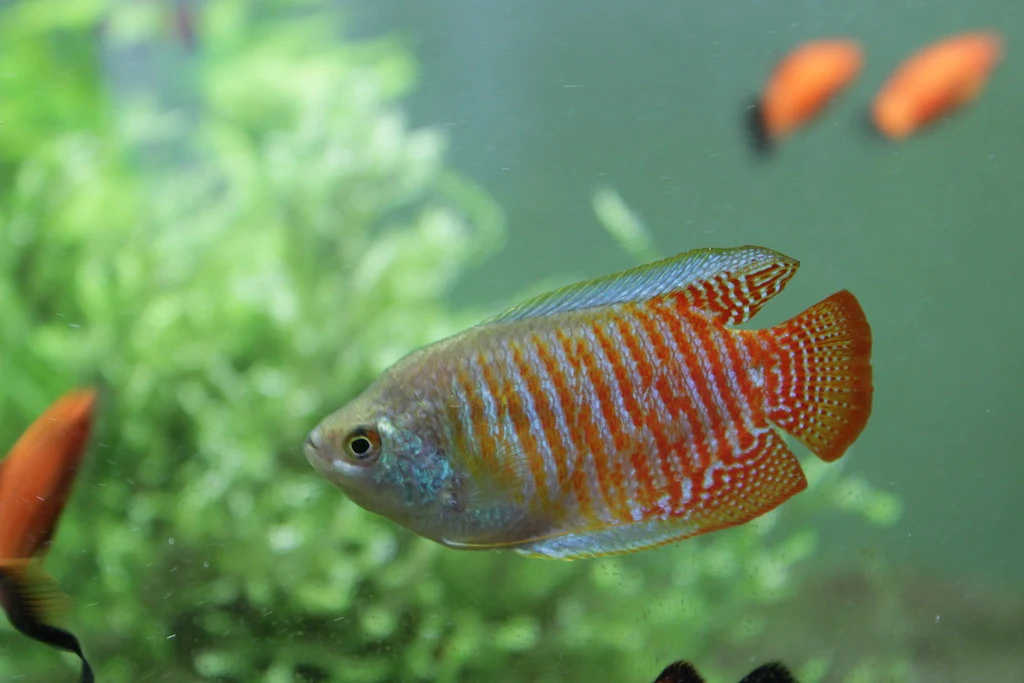
Neon Tetras: Illuminating Aquatic Ambiance
A radiant addition to the zebrafish tank, Neon Tetras bring a luminous vibrancy to the underwater stage. Their iridescent hues and gentle nature make them exquisite companions, harmonizing effortlessly with the lively zebrafish community. Neon Tetras, with their schooling behavior, infuse the aquarium with a captivating glow, creating a mesmerizing aquatic ambiance that captivates both aquarists and onlookers alike. In the collaborative dance of zebrafish and Neon Tetras, each finned artist contributes to the symphony of aquatic life, making the aquarium a beacon of color and tranquility.

In weaving the tapestry of a zebrafish community, these compatible tank mates, including various danio varieties, rasboras, corydoras catfish, gouramis, and neon tetras play pivotal roles. The amalgamation of their distinct characteristics not only enhances the visual appeal of the aquarium but also fosters a thriving, balanced ecosystem where each species contributes to the overall aquatic harmony.
Incompatible Tank Mates
Aggressive Culprits: Betta Fish
Reason for Incompatibility: While Betta fish showcase breathtaking finnage, their territorial and aggressive nature can lead to conflict within a zebrafish community. The dynamic nature of zebrafish schools may provoke aggression in Betta fish, disrupting the overall harmony of the aquarium.

Feisty Nippers: Tiger Barbs
Reason for Incompatibility: Despite their vibrant appearance, Tiger Barbs have a penchant for fin nipping, which can be particularly distressing for zebrafish. This aggressive behavior, rooted in their schooling instincts, may lead to stress and injury among the otherwise social zebrafish.
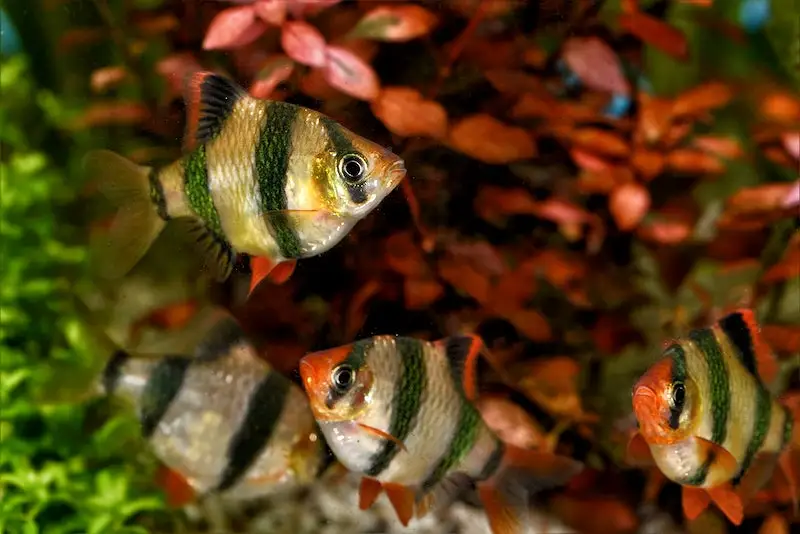
Territorial Tendencies: Cichlids
Reason for Incompatibility: Cichlids, known for their territorial behavior, can create an imbalance in a zebrafish community. Their propensity for defending territories might result in heightened stress levels among the zebrafish, as these species have contrasting social dynamics.
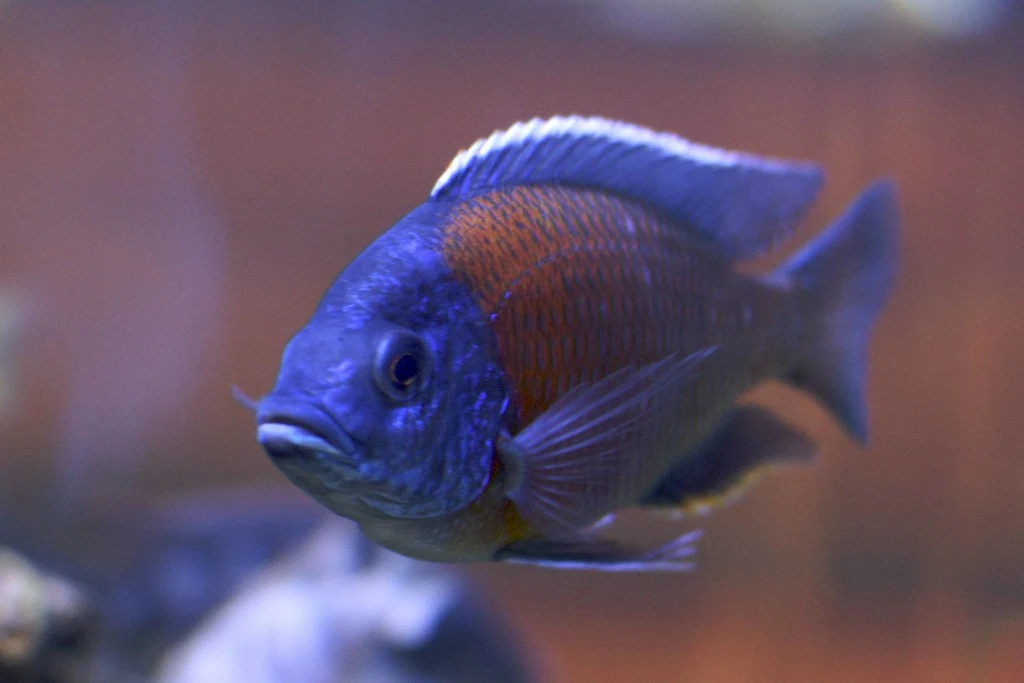
Size Discrepancies: Oscars
Reason for Incompatibility: The substantial size difference between zebrafish and Oscars poses a challenge. Oscars, being large and robust, may inadvertently intimidate or prey on smaller zebrafish, creating a hostile environment that jeopardizes the well-being of the zebrafish community.
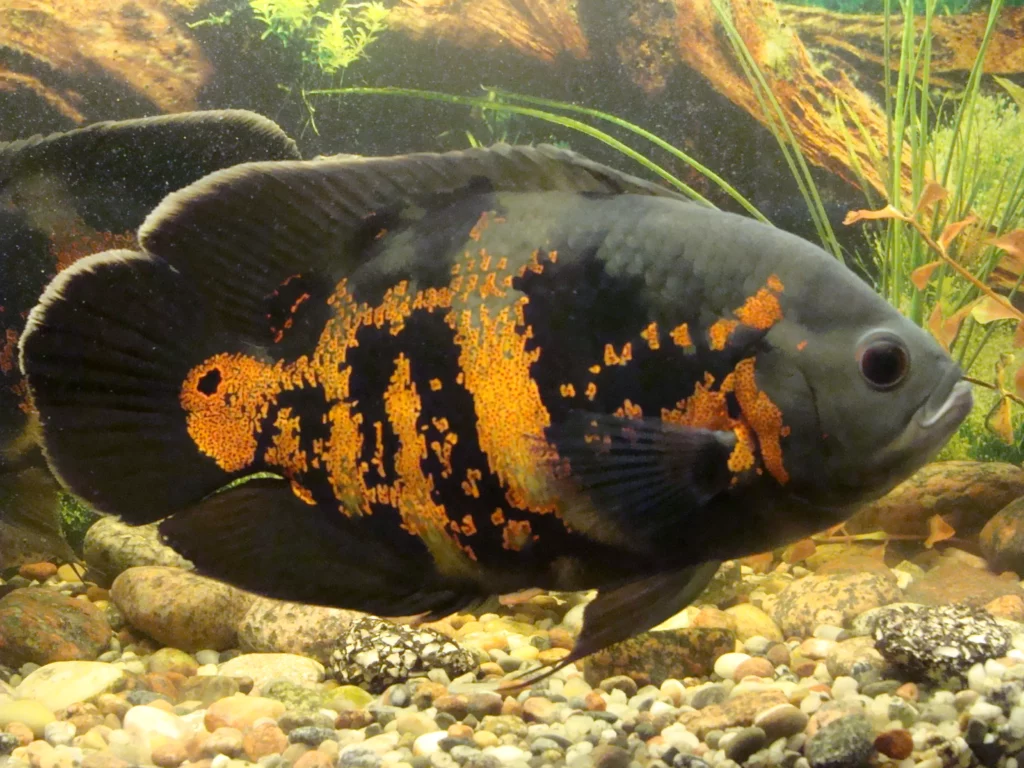
Temperature Sensitivity: Goldfish
Reason for Incompatibility: Goldfish, often associated with colder water temperatures, may not align with the warmer preferences of zebrafish. The disparity in temperature requirements can lead to discomfort and health issues for one or both species, making them unsuitable tank mates.
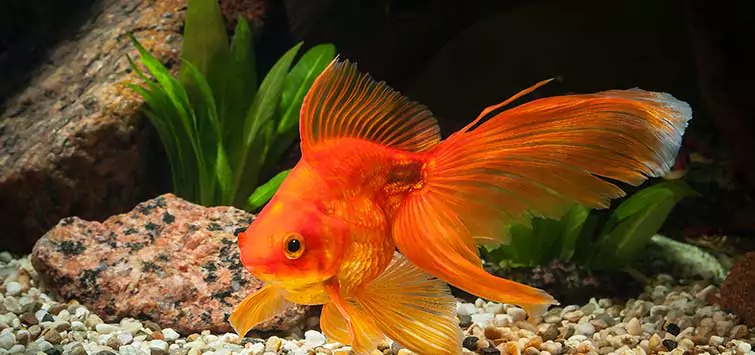
In navigating the diverse tapestry of potential tank mates, steering clear of these incompatible species ensures the harmonious coexistence of a zebrafish community. Recognizing the behavioral and environmental intricacies of these species safeguards the serenity and well-being of the aquarium’s inhabitants.
Introducing New Tank Mates
Gradual Acclimatization: Easing into Harmony
Introduction Ritual: Before releasing new tank mates into the zebrafish habitat, it’s crucial to initiate a gradual acclimatization process. Float the new arrivals in their bags atop the aquarium water, allowing them to acclimate to the temperature. Over time, introduce small amounts of tank water into the bag to familiarize them with the water parameters.
Observation Chamber: A Safe Haven
Quarantine Essentials: Establish a quarantine tank as a preliminary refuge for new additions. This separate chamber serves as a crucial step in disease prevention. Monitor the newcomers closely for any signs of illness or stress during this period. Quarantining mitigates the risk of introducing pathogens to the main aquarium, ensuring the health of both existing and incoming residents.
Routine Health Checks: Vigilance in Wellness
Visual Assessment: Prioritize a thorough visual inspection of the new tank mates. Look for any signs of abnormal behavior, physical abnormalities, or visible symptoms of disease. A proactive approach to health checks contributes to the early detection and containment of potential issues, safeguarding the overall well-being of the aquarium community.
Dietary Consistency: Nourishing Harmony
Gradual Dietary Integration: Maintain dietary consistency during the acclimatization phase. Ensure that the new tank mates receive nutrition similar to that of the existing zebrafish community. Gradually introduce any new food items to prevent digestive stress and promote a seamless integration of feeding routines.
Social Dynamics: Ensuring Amicable Coexistence
Monitor Social Interactions: Once the acclimatization process is complete, carefully observe the social dynamics within the tank. Pay attention to any signs of aggression or stress among the zebrafish and their new companions. Intervene if necessary to foster a harmonious coexistence, ensuring that the introduction of new tank mates enhances rather than disrupts the aquatic balance.
In the delicate dance of introducing new tank mates to a zebrafish community, these strategic steps, from gradual acclimatization to diligent quarantine practices, form the choreography of success. By combining patience, vigilance, and proactive care, aquarists can orchestrate a seamless integration that contributes to the overall vitality and longevity of their aquatic ensemble.
Monitoring and Troubleshooting
Behavioral Vigilance: The Heartbeat of Harmony
Routine Observation Ritual: Regularly monitor the behavior of your zebrafish community, keeping a keen eye on signs of stress or aggression. Observe their swimming patterns, feeding habits, and interactions. Familiarity with their baseline behavior enables swift identification of any deviations, providing a preemptive approach to maintaining a tranquil aquatic environment.
Subtle Signs of Stress: Decoding the Language
Stress Indicators: Acknowledge subtle indicators of stress, such as changes in coloration, decreased appetite, or erratic swimming patterns. These signs serve as silent messengers, prompting a deeper investigation into potential stressors within the tank. Recognizing these signals early on empowers aquarists to address issues promptly.
Addressing Bullying Behavior: A Diplomatic Approach
Diversionary Tactics: If bullying or aggression is detected, consider introducing hiding spots or additional decorations within the tank. These features offer refuge for bullied individuals and disrupt the aggressor’s territorial focus. Creating a more intricate environment can diffuse tension and promote a more equitable distribution of space.
Territorial Disputes: Redrawing Boundaries
Rearranging Tank Decor: To alleviate territorial disputes, periodically rearrange tank decorations. This simple act disrupts established territories, encouraging fish to redefine their spaces and reducing the likelihood of persistent aggression. A subtle shift in the tank’s landscape can foster a renewed sense of equilibrium.
Community Dynamics: Ensuring Equitable Coexistence
Introduce Compatible Tank Mates: If behavioral issues persist, consider reassessing the compatibility of tank mates. Introducing additional compatible species or rehoming particularly aggressive individuals can recalibrate the social dynamics of the tank, creating a more harmonious living space for all inhabitants.
In the rhythmic ebb and flow of aquarium life, meticulous monitoring and proactive troubleshooting form the bedrock of a successful zebrafish community. By attuning yourself to the subtle language of fish behavior and implementing strategic interventions, aquarists can navigate the complexities of social dynamics and create an environment where each finned resident thrives in serenity.
Conclusion
In the symphony of aquatic life, the art of choosing zebrafish tank mates unfolds as a delicate dance of compatibility and care. As we conclude this exploration, let’s distill the key points that resonate in the harmonious assembly of a thriving aquarium.
- Diverse Companionship: The selection of suitable tank mates, from danios to rasboras, corydoras catfish, gouramis, and neon tetras, forms the palette of diversity within the zebrafish community. Each species, with its unique traits, contributes to the richness of the underwater tableau.
- Environmental Synergy: Balancing water parameters, ensuring an adequately sized tank, and choosing compatible companions align with the fundamental principles of environmental synergy. Attention to these details lays the foundation for a healthy and vibrant aquatic ecosystem.
- Acclimatization Expertise: The delicate process of introducing new tank mates demands acclimatization expertise. From gradual temperature adjustments to the implementation of quarantine practices, acclimating fish with care safeguards against stress, disease, and disruption.
- Vigilance in Observation: Regularly observing fish behavior serves as a sentinel for the aquarium’s well-being. Identifying signs of stress, aggression, or territorial disputes enables timely intervention, fostering an environment where each finned resident can thrive.
- Proactive Troubleshooting: In the dynamic landscape of a zebrafish community, proactive troubleshooting emerges as an essential skill. Addressing issues such as bullying or territorial disputes through strategic measures ensures the sustained harmony of the aquarium.
As stewards of aquatic realms, we encourage responsible fishkeeping practices. By embracing the delicate balance of nature, fostering compatibility, and approaching challenges with a discerning eye, aquarists become custodians of thriving ecosystems. Let us embark on this journey with reverence for the underwater world, where the synergy of science and compassion creates an aquarium that is not merely a habitat but a sanctuary of flourishing aquatic life.
Additional Resources
Deepening Your Knowledge: Recommended Reading
The Complete Idiot’s Guide to Freshwater Aquariums by Mike Wickham: This comprehensive guide offers insights into freshwater aquarium setup, maintenance, and the intricacies of choosing compatible tank mates for zebrafish.
Aquarium Care of Goldfish by David E. Boruchowitz: While primarily focused on goldfish care, this book provides valuable information on water parameters and community dynamics, offering a holistic perspective for aquarium enthusiasts.
Engaging with the Community: Online Forums
- Fishlore Zebrafish Community: Dive into discussions about zebrafish tank mates, troubleshooting, and general aquarium care on Fishlore’s dedicated Zebrafish forum. Connect with experienced aquarists and enthusiasts to glean insights and share your own experiences.
- Aquarium Advice Zebrafish Section: Explore the Zebrafish section on Aquarium Advice for a wealth of information on tank mates, water conditions, and community interactions. Engage with a vibrant community of aquarists passionate about creating optimal environments for their zebrafish.
By delving into these recommended resources and engaging with online communities, you can augment your understanding of zebrafish tank mates and aquarium dynamics. Whether you’re a novice or seasoned aquarist, these resources serve as valuable companions on your journey towards creating and maintaining a harmonious aquatic habitat.
Frequently Asked Questions (FAQs)
1. What are the Best Tank Mates for Zebrafish?
Zebrafish thrive with compatible companions such as danios, rasboras, corydoras catfish, gouramis, and neon tetras. These species share similar environmental preferences and social dynamics, creating a harmonious aquarium community.
2. How Do I Introduce New Tank Mates to my Zebrafish Aquarium?
Ensure a seamless introduction by gradually acclimating new fish to the tank’s water parameters. Use a quarantine tank to monitor their health and behavior before introducing them to the main aquarium, preventing the potential spread of diseases.
3. What Size Tank is Suitable for Zebrafish with Tank Mates?
Zebrafish, especially when housed with tank mates, require a well-sized tank to accommodate their schooling nature. A minimum of 20 gallons is recommended for a community setup, providing ample space to prevent territorial disputes and ensure the overall well-being of the inhabitants.
4. How Can I Identify Signs of Stress or Aggression in Zebrafish?
Watch for subtle signs such as changes in coloration, erratic swimming patterns, or decreased appetite. Behavioral deviations may indicate stress or aggression. Regular observation allows aquarists to detect issues early and take corrective measures for a harmonious environment.
5. Are There Incompatible Tank Mates for Zebrafish?
Yes, certain species like Betta fish, Tiger Barbs, and Oscars may not be suitable tank mates due to their aggressive tendencies, fin-nipping behavior, or substantial size differences. Understanding the compatibility of potential tank mates is crucial for maintaining a balanced and stress-free aquatic community.


